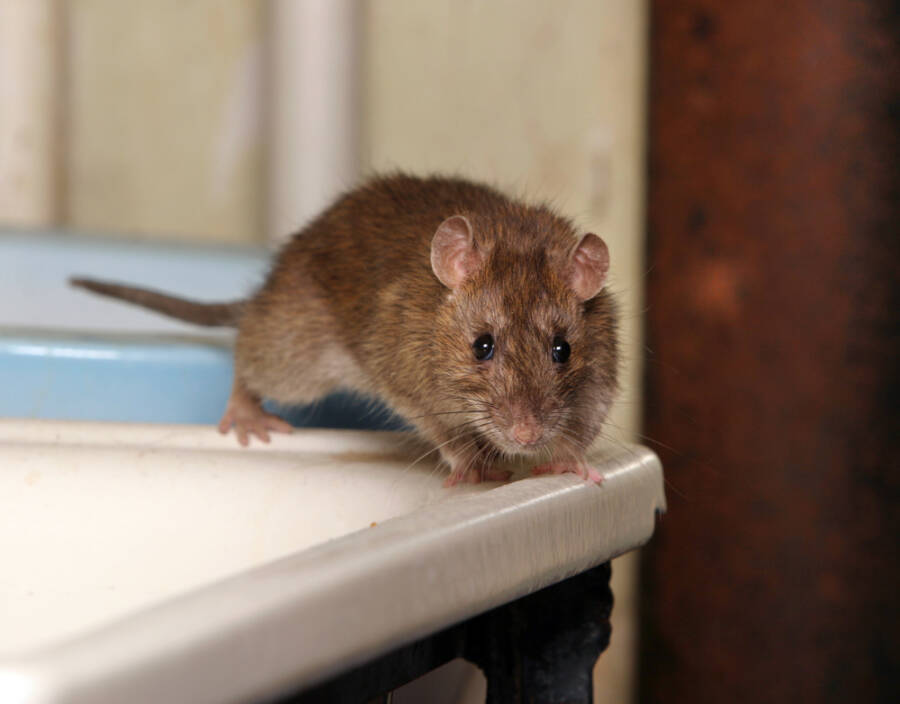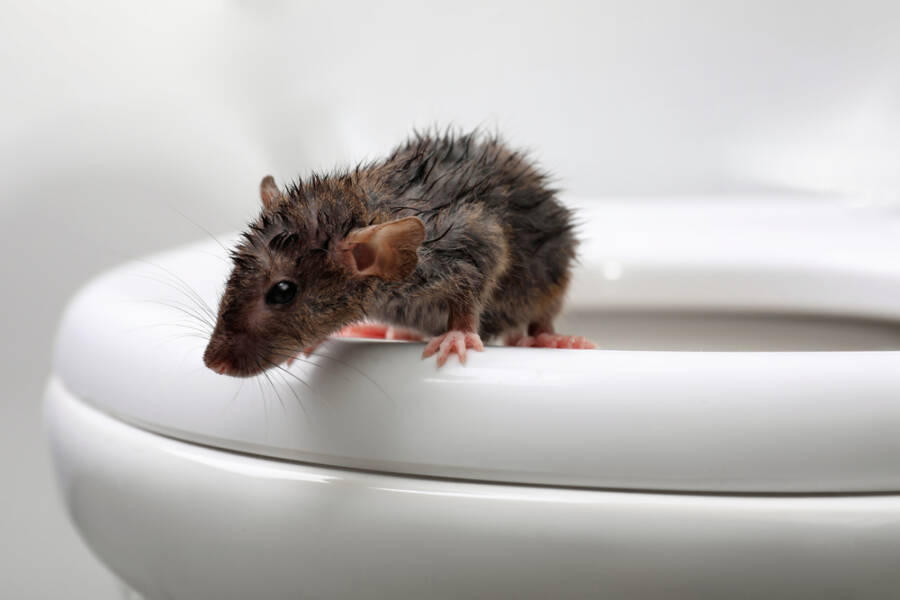“I just saw a rat in my toilet bowl. I heard about this from other people, but I never thought it could happen to me.”
If I had a penny for every time I heard someone say this, I would buy myself a nice treat. But yes, it’s not just an urban legend: rats can actually travel through pipes and into toilets. A rat coming out of a toilet bowl can seem quite terrifying, especially if it’s YOUR toilet bowl.
If that ever happens, the first thing that comes to mind is whether you’re safe and what’s the first thing that needs to be cleaned. Or probably just to pack your bags and fly to Mexico. Even if it’s not a frequent occurrence, living and dead rats could indicate a bigger issue within urban sewer systems and residential plumbing.
For instance, according to James Agardy, technical and training manager at Viking Pest Control, “While there’s really nothing specific to toilets that draws rats in, as soon as they find their way into the lines toilets provide, it becomes an easy point of entry for them into the home.”
Those who find themselves in such situations are probably looking for steps that can be taken to get rid of the rats and even prevent rats from coming back. In other words, flushing the rat might be the easiest solution. But it’s still important to assess the situation as best as you can and consider calling one of the best pest control companies if it becomes too overwhelming.

How and why rats come up to toilets
Rats often stay in sewers, and they love warmth, nesting sites, and, of course, places where there might be food. But if they deal with high competition food-wise, sewer rats might decide to follow the scent of kitchen scraps straight into someone’s plumbing system.
Rats also have hinged rib cages that let them squeeze through small gaps or even cracks inside sewage pipes. In fact, according to Agardy, “rats are very good at running, jumping, climbing, and even swimming. They use all these abilities to gain access to places.”
They are also great when it comes to swimming great distances, and they can easily dive beneath the surface to enter pipes. Besides working their way up from the sewer system, rats can easily gain access to the system by infiltrating into the plumbing vent stacks.
Then, they rapidly work their way in from the top down. Even if rats can be found in toilets in any given environment, urban areas are especially susceptible, especially since the dense network of sewer pipes is perfect for their climbing endeavors.
What to do after you find a rat in the toilet
For those of you who have been unfortunate enough to find a rat in the toilet or simply want to be prepared for this possibility, there are a couple of safe and effective steps you can take.
If the rat is still alive, it’s rather important to keep the toilet lid closed.
In the unsettling event of discovering that the rat you spotted in the toilet is still alive, it’s absolutely essential to keep the toilet lid completely shut. This will keep the rat from jumping out of the toilet but also from traveling elsewhere in the home where it can’t be removed.
Placing a heavy object on the toilet lid will prevent the rat from pushing its way out and into the bathroom. Keeping the rat within the toilet takes a lot of time to assess the situation and decide what steps you need to take further, whether it implies contacting pest control professionals or even taking a DIY approach. There’s also a slight chance that, as soon as the rat realizes it’s stuck, it will exit the toilet the same way it entered.
Throw some dish soap into the toilet bowl because it will make it harder for the rat to stay afloat.
A dead rat in the toilet is definitely safer and easier to deal with than a live one. Dish soap is another surprising ingredient that could be efficiently used to kill rats in the water. And since dish soap is a degreaser, it will effectively remove any oil from the rat’s fur that’s helping it to stay afloat.
It might also cause the water’s surface tension to break, which would further inhibit the rat’s ability to tread water. Ultimately, the rat will tire and give up. At such a point, there is no longer a risk for the rat to escape from the bowl or bite and scratch anyone.
The dish soap will make it slippery, which will also help flush the rat more easily down the toilet if that’s the next thing you want to do.
As soon as the rat is dead, you can flush it back down the toilet.
Probably the most obvious thing you can do to address a rat stuck in the toilet is to flush it. If it’s already dead, even better. However, you need to be aware: in some cases, the water pressure can potentially flush it back down the lines, and rats are probably among the strongest swimmers out there.
Flushing might not be enough. Rats that are small enough to fit and crawl up the toilet plumbing can also be flushed back easily. But what about larger rats? They might cause plumbing issues and blockages, disrupting the normal flow of waste or even leading to more serious plumbing issues that require professional repair. In the event of a clog from a flushed rat, it’s highly recommended to call a plumbing service.

If the rat escapes from the toilet bowl or it’s way too big to flush, it’s a good idea to call a pest control company for assistance.
For those who find themselves in a situation where a rat escapes the toilet bowl or who suspect the rat is simply too big to be safely flushed, professional assistance might be the best route for the rat’s removal.
You can also catch a rat using one of these rat traps. But it’s still worth knowing that, according to the Centers for Disease Control and Prevention (CDC), rats are well-known for carrying a wide range of diseases, like the hantavirus.
These diseases can be easily transmitted through direct contact, like attempting to capture or even dispose of a rat, or just getting exposed to environments that are contaminated by rodent urine, droppings, or even saliva.
Pest control companies are already equipped with the needed tools, knowledge, and protective gear to remove a rat without risking the spread of diseases within the home. The cost to eliminate rats ranges from $176 to $580 on average.
Even if the cost of pest control isn’t insignificant, it’s worth it because it provides great peace of mind to residents who don’t know how to deal with such an issue. Pest control professionals could also provide solutions to prevent rats and other pests from entering the home in the future.
If you found this article insightful, we also recommend reading: 8 Items You Shouldn’t Store on the Top of Your Fridge, According to Safety Experts







